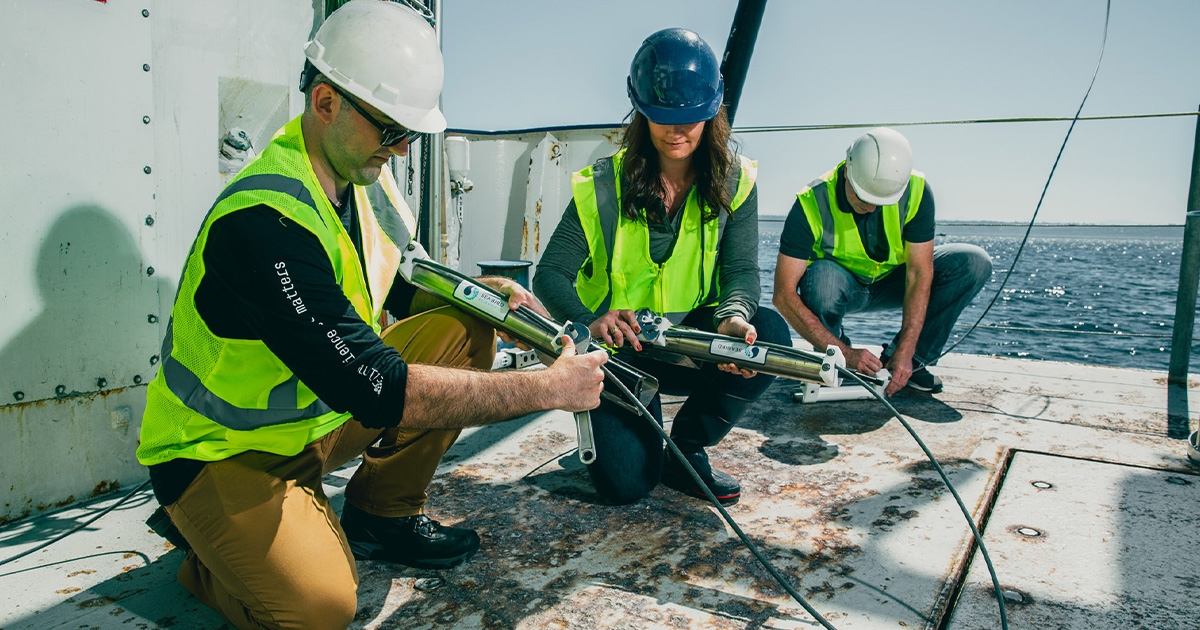Sea-Bird Scientific: Powering Science-Based Decisions for a Better Ocean

Based in Bellevue, Washington, Sea-Bird Scientific is a developer and manufacturer of products for ocean measurements. Genevieve Howell, Director of Products & Global Services at Sea-Brid Scientific, joined the editorial team at ON&T Magazine to speak about Sea-Bird Scientific’s latest innovative sensors for generating accurate and defensible ocean measurements.
- ON&T: Give us a brief overview of Sea-Bird Scientific and some of the company’s most recent projects.
- ON&T: What makes Sea-Bird instruments so unique?
- ON&T: What products is Sea-Bird offering to support the growing demand for remote oceanographic systems?
- ON&T: So, what would be Sea-Bird’s primary product focus right now?
- ON&T: Looking ahead, where do you see Sea-Bird heading in the next 5–10 years?
GH: Launched by Art Peterson, originally Sea-Bird Electronics, was a Seattle startup based in his garage. In October 2008, Sea-Brid became publicly owned and was later joined by Wet Labs and Satlantic. This widened Sea-Bird’s products from the core CTD-related sensors into radiometry products capable of measuring nutrients, pH, and other biogeochemical parameters. The collaboration between these three companies has allowed Sea-Bird to produce turnkey solutions across a broad range.
Sea-Bird has been involved with the Argo program—a global array of over 4,000 robotic, autonomous floats taking ocean profile measurements of a 10-day cycle. As a sensor provider for the program, we have worked with the scientific community to mainly provide conductivity, temperature, and pressure sensors. However, as the program evolves to include biogeochemical and deep-sea measurements, we have ramped up the development of new technology to meet those needs.
Another project we are working on in partnership with NASA is working to improve our ocean color measurements using the PACE Satellite. Plankton and phytoplankton come in various shapes, sizes, and pigments. Before partnering with Sea-Bird, the satellite calibration process for NASA was very slow and difficult, but with our technology, we have improved the system to perform the same calibration work in three to six months. This helps NASA and other scientists to accurately look at the changes in ocean communities, food webs, and ocean color.
GH: In short, their capacity for ultra-stable measurements, which really stems from our metrology—the scientific study of measurement—practices. Metrology allows us to trace an instrument’s reading or measurement back to a primary standard. Instead of a characterization process, our temperature, salinity, and oxygen sensors undergo a rigorous calibration method that allows them to make accurate measurements scientists and industry professionals can be confident in.
A few months ago, we launched the Hydrocat V2, our latest multiparameter instrument, the design of which was heavily influenced by our customer base. It is a compact self-contained package that measures the traditional CTD measurements—temperature, conductivity, and pressure—but can also be retrofitted to measure pH, dissolved oxygen, fluorescence, and turbidity. We developed this instrument to be used for broad applications and in varying environmental conditions. It can be deployed long-term in biologically rich environments and the newly incorporated pH sensor and flushing port help save the user time and improve the ease of maintenance.
GH: In addition to our long-standing relationship with the oceanographic float community, we also have various product offerings for remote and autonomous platforms, including gliders and other uncrewed systems. These are one-parameter modular offerings that can be integrated into a customer’s platform.
For these applications, Sea-Bird aims to provide durable, reliable sensors for field-specific purposes. We are excited and interested to see how we can expand the availability of biogeochemical sensors to this field of uncrewed and autonomous platforms in the future.
GH: A few months ago, we launched the Hydrocat V2. This is our latest multiparameter instrument that was heavily requested by our customer base. It is a small self-contained little package that measures the traditional CTD measurements—temperature, conductivity, and pressure—but can also be retrofitted to measure pH, dissolved oxygen, fluorescence, and turbidity. We developed this instrument to be used for broad applications and varying environmental conditions. It can be deployed long-term in biologically rich environments and its newly integrated pH sensor and flushing port help save the user time and improve the ease of maintenance.
GH: Our mission at Sea-Bird Scientific is to power science-based decisions for a better ocean. We are focused on providing the scientific community with products and support to advance the understanding of larger ocean phenomena like predicting and forecasting hurricane patterns and strength, climate change, and more. Our commitment to constantly monitor and improve measurement capabilities and calibration processes underpin our 10-year plan to empower ocean decision makers with scientific defensible measurements.
As an organization, we are also committed to ensuring that our teams in terms of inclusivity. A recent Gallup study showed that gender-diverse teams tend to perform better as a whole when compared to single-gender teams, helping to facilitate a broader spectrum of viewpoints, ideas, and insights.
As a developer and manufacturer of products for a growing and changing ocean industry, we believe that establishing and growing a diverse team of professionals is the key to tackling some of the complex and multifaceted challenges facing the ocean community.
For us, developing the industry standard means staying laser-focused on enabling the science that truly matters. Therefore, pinpointing our core focus 10 years from now is tricky. What I can say, with certainty, however, is that Sea-Bird Scientific will still be developing and manufacturing best-in-class scientific instrumentation for marine scientists, by marine scientists.
To learn more, visit: https://www.seabird.com/
This story was originally published in ON&T's August 2023 issue. Click here to read more.

